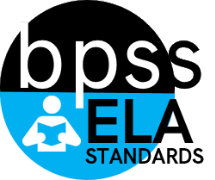ELA-12.SL.06
|
12th Grade ELA Targeted Standards
[SL] Speaking and Listening Strand
Cluster: Presentation of Knowledge and Ideas
ELA-12.SL.06 Adapt verbal and nonverbal communication to a variety of contexts, audiences, and tasks, demonstrating fluency and poise, and a command of formal English when indicated or appropriate.
|
Student Learning Targets:
Reasoning Targets
- I can synthesize comments, claims, and evidence made on all sides of an issue.
- I can resolve contradictions and determine what additional information or research is needed to complete or deepen the investigation.
Skills (Performance) Targets
- I can initiate and participate effectively in a range of collaborative discussions.
- I can come to a discussion prepared, having read and researched material which I will then refer to during the discussion.
- I can work with peers to promote civil, democratic discussions and decision making, set clear goals and deadlines, and establish individual roles as needed.
- I can propel conversations by posing and responding to questions that probe reasoning and evidence. I can respond thoughtfully to diverse comments.
- I can present information, findings,and supporting evidence, conveying a clear and distinct perspective which is appropriate to the purpose.
- I can adapt speech to variety of contexts and tasks, demonstrating effective use of formal English when necessary.
Product Targets
- I can create an effective digital aid in presentations to enhance understanding.
Proficiency Scale
Measurement
of Progress |
Presentation of Knowledge & Ideas
-
SL11-12.4 Organize, develop, and present claims, information, findings, and supporting evidence, using communication techniques appropriate to purpose and audience in a range of formal and informal tasks.
-
SL11-12.5 Make strategic use of digital media in presentations to enhance understanding of findings, reasoning, and evidence and to add interest.
-
SL11-12.6 Adapt verbal and nonverbal communication to a variety of contexts, audiences, and tasks, demonstrating fluency and poise, and a command of formal English when indicated or appropriate.
|
Sample Activity
|
| Advanced |
In addition to expectations of proficiency, student provides consistent evidence of in-depth inferences and applications that go beyond what was taught and expected.
|
- |
| Proficient |
The student
-
presents information clearly, concisely, and logically.
-
presents information in a sequence that allows the listener to follow the line of reasoning.
-
delivers a presentation in which organization, development, substance and style are appropriate to purpose, audience, and task.
-
strategically integrates appropriate digital media or visual aids to enhance interest and understanding.
-
employs effective verbal and nonverbal delivery techniques: eye contact, rate, volume, inflection, pronunciation, enunciation, gestures, poise, language, conversational tone.
|
- |
| Progressing |
There are no major errors or omissions regarding the simpler details and processes as the student:
-
presents information in a logical and organized manner.
-
delivers a presentation appropriate to purpose, audience, and task.
-
integrates appropriate digital media or visual aids.
-
employs some effective verbal and nonverbal delivery techniques: eye contact, rate, volume, inflection, pronunciation, enunciation, gestures, poise, language, conversational tone.
-
recognizes or recalls specific terminology that relates to speaking and listening skills, such as:
-
Digital media, rate, volume, inflection, pronunciation, enunciation, gestures, poise, language, conversational tone.
However, the student exhibits major errors or omissions regarding the more complex ideas and processes.
|
- |
| Novice |
With help, the student demonstrates a partial understanding of some of the simpler details and processes and some of the more complex ideas and processes. |
- |
Resources
Websites
Vocabulary |

